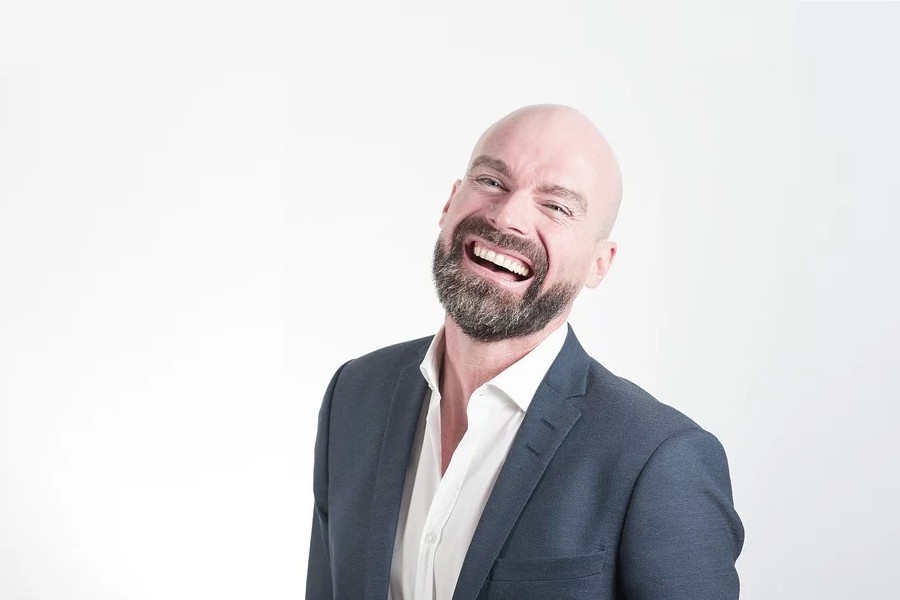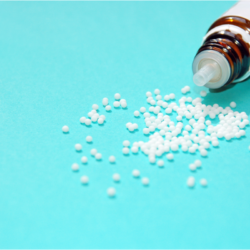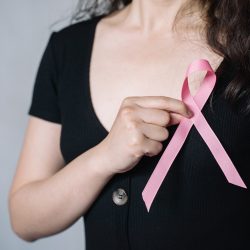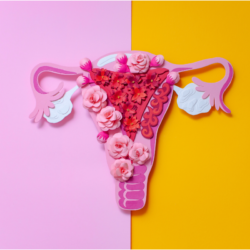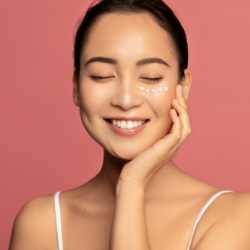Andropause is defined as the set of physiological and psychological symptoms that may accompany the decline in androgen levels in ageing men. It occurs in particular between the ages of 45 and 65 and is less sudden in onset than the menopause in women. Andropause is a condition that occurs in men when their testosterone levels decline with age. Symptoms of andropause can be very varied and can include decreased libido, fatigue, depression,irritability, erectile dysfunction, muscle loss and weight gain. It is important to note that andropause is not a disease, but rather a natural process that occurs in all men at a certain age.
What is andropause?
Andropause does not affect all men. It does not mean the end of fertility. Moreover, hormonal decline in men is partial, gradual and inconsistent
Pathophysiology
Andropause begins with a reduction in leydigian secretion (testicular leydig cells), resulting in a drop in free testosterone (increase in SHBG) and a drop in total testosterone. Consequence: rise in gonadotropins (LHRH).
- reduced spermatogenesis
- reduced fertility
Susceptibility to andropause is linked to insulin metabolism, the entire endocrine axis (pituitary gland, hypothalamus, thyroid, adrenal gland) and also to the competence of the neurotransmitter system (serotonin, melatonin, dopamine, noradrenalin, adrenalin…)
In addition, it’s important to note that the symptoms often associated with andropause are not exclusive to this condition. According to a study quoted by Passeport Santé, although the drop in free and total testosterone is a marker of andropause, symptoms such as fatigue , depression or reduced libido can also be the consequence of other health problems, and are therefore not specific to andropause. This perspective adds nuance to the diagnostic approach to andropause, highlighting the complexity and variability of symptoms in ageing men.
The clinical expression of andropause
The onset of andropause is gradual and has no physical signs, unlike in women where the physical sign of menopause is amenorrhoea (the absence of menstrual periods).
Nevertheless, the diagnosis of andropause, apart from a blood test, is made by the addition of the following subjective symptoms: emotional instability, reduced muscle power, reduced strength, reduced resistance to effort, reduced reaction speed, increased fat deposits around the abdomen, sleep disorders, chronic pain, reduced libido, erectile dysfunction, reduced bone strength and also general health consequences such as osteoporosis and increased vascular risk.
This variability in symptoms is corroborated by recent studies, which suggest that there is no direct, systematic correlation between testosterone levels and andropause symptoms. Thus, some men with normal testosterone levels may experience symptoms typical of andropause. This information is essential for a correct overall assessment of symptoms, and to avoid reducing andropause to a simple hormonal issue.
Risk factors
These factors have ultimately been associated with lower testosterone levels.
- Excessive alcohol and cannabis consumption.
- Excess weight. An increase of 4 or 5 points in body mass index is equivalent to an ageing of 10 years relative to the drop in testosterone.
- Abdominal obesity. This corresponds to a waist circumference greater than 94 cm in men.
- Diabetes and metabolic syndrome.
- Blood lipid levels, particularly cholesterol, outside the normal range.
- Chronic illness.
- Liver problems.
- Chronic stress.
- Taking certain drugs, such as antipsychotics, certain anti-epileptics and narcotics
Preventing andropause
- A varied fat intake rich in essential fatty acids such as long-chain polyunsaturates (arachidonic acid, eicosapentaenoic acid and docosahexaenoic acid).
- Protein: the protein requirement is 1 gram of protein per kilo of body weight.
- Micronutrients: the need for micronutrients is high: rich in minerals (calcium, magnesium), selenium, zinc, vitamin A, vitamin K and group B vitamins.
- A water intake of around 2 litres, including at least 0.7 litres in the form of drinks, is essential.
- Avoid very sweet foods.
- Increase your consumption of nuts, hazelnuts, wholemeal cereals, magnesium-rich legumes, olive oil, soya, dried fruit, vegetables and fruit, and limit animal fats.
Nutritional status is one of the key factors in combating the rapid onset of andropause, in terms of both quantity (36 kcal/kg) and quality.
Biological assessment of andropause
Blood levels of testosterone and its derivatives are the most characteristic indicator of andropause.
| Hormone/Test | Normal values | Comments |
|---|---|---|
| Testosteronemia | N = 4 to 9 µg/l | The minimum level is 4 whatever the age. Normality varies from laboratory to laboratory. |
| Free testosterone | Lowest level 1.3 µg/L or even 0.7 | Difficult to interpret due to sensitivity of assays. |
| LH or LHRH | Normal level = 1.7 to 7.7µg/l | In andropause, LH is around 5.6 to 13.6µg/l. |
| Hypo Testosteronemia LH High | – | Indicates testicular damage. Supplementary treatment may be considered. |
| Hypo Testosteronemia LH Normal/Decreased | – | May indicate pathology of the hypothalamo-hypophyseal axis. Need to measure prolactin. |
| Other hormones (growth hormone, DHEA, melatonin, etc.) | – | These hormones decrease during andropause. |
How is andropause treated?
The treatment for andropause is first and foremost hormonal treatment with testosterone. However, the side effects of hormonal treatment limit its use to patients with confirmed clinical and biological signs.
If there are contraindications to hormone therapy, tackling the aetiology of the problem and using symptomatic remedies will help you get through this difficult period. In all cases, treatment should be complemented by a preventive diet, improved detoxification of the body and the addition of antioxidants
- Hormone therapy: Testosterone, in the form of intramuscular injections (around 1 per month, reimbursed by Social Security), tablets (also reimbursed) or gel (to be applied to the skin), which is not reimbursed. However, other oral presentations or self-adhesive skin patches, already marketed in the United States, are due to be launched shortly.
- Warning : Treatment should be considered only after patients have been informed of the risk of prostate cancer (30% of patients at this age). This is why a PSA assay and digital rectal examination are essential before treatment. bHormone therapy has a proven but not mandatory effect on bone density and physical, psychological and sexual asthenia
- HCG: Another hormonal treatment, based on chorionic gonadotropins, is possible when testosterone levels are still normal but a little low. These stimulate the testicles to produce more testosterone.
Treating andropause with food supplements
Find out how food supplements can help manage the symptoms of andropause, offering a natural approach to maintaining hormonal balance and general well-being.
Introduction to Andropause
- Andropause, also known as the ‘male pause’, is a natural age-related process.
- It is characterised by a decrease in sex hormones, particularly testosterone.
- It can lead to fatigue, loss of muscle mass, depression, reduced libido and erectile dysfunction.
Food supplements: Useful support
- Help meet nutritional needs.
- Provide vitamins, minerals and medicinal plants.
Types of supplements for Andropause
- Testosterone: Key hormone for secondary sexual characteristics.
- Available in the form of oral supplements or topical gels.
- Acetyl-L-Carnitine: Improves cognitive function and reduces fatigue.
- Vitamin D: Essential for bone health and hormone regulation.
- Medicinal plants:
- Ginseng: Improves sexual function and libido.
- Tribulus: Can increase testosterone levels.
- Maca: Known for its effects on libido and erectile function.
Androlistica®: A complete supplement
- Contains fatty acids, phytosterols, OMEGA 3, provitamins, minerals and antioxidants.
- Benefits :
- Protects against premature ageing.
- Maintains urinary balance and prostate health.
- Special ingredients: Onion and yam extracts for improved sterol conversion.
Directions for use
- Recommended dosage: 2 to 3 capsules a day with meals.
- Frequency: 3 weeks per month.
Herbal remedies for andropause
Phytotherapy is a form of alternative medicine that uses medicinal plants to treat various illnesses and conditions. There are many herbal remedies that can help relieve the symptoms of andropause. Here are some of the most commonly used remedies:
- Ginkgo biloba: Ginkgo biloba is a plant that is often used to improve blood circulation and increase libido. Studies have also shown that it improves erectile function in men suffering from andropause.
- Tribulus terrestris: Tribulus terrestris, a specific plant also known as Malta cross, is a plant that is often used to increase testosterone levels. It has also been shown to improve libido and erectile function in men with andropause.
- Saw palmetto: Saw palmetto is a plant often used to treat prostate disorders. It has also been shown to help relieve the symptoms of andropause. These include reduced libido and erectile dysfunction.
- Tongkat Ali: Tongkat Ali is a plant often used to increase testosterone levels. It has also been shown to improve libido and erectile function in men with andropause.
- Maca: Maca is a plant often used to increase libido and erectile function. It has also been shown to help relieve the symptoms of andropause. These include fatigue, depression and irritability.
- Glycine max: The effects of soya extract are manifold: Stability of bone density in both sexes after the age of 50; Presentation of a cholesterol-lowering effect, precursor of nitric oxide (the most powerful vasodilator known); Slowing of the rise in PSA in prostate cancer and prevention of prostate cancer; Renal protection in diabetics and improvement in cognitive functions (in a group capable of producing equol from daïdzéine) in the presence of competent intestinal bacteria.
It is important to stress that phytotherapy should not be considered as an alternative to medical treatment. It is important to consult a doctor before starting any herbal treatment for andropause.
The use of plants that act as precursors of essential hormones such as testosterone, melatonin and DHEA also helps to compensate for the physiological decreases associated with andropause.
Antioxidant or stimulant plants?
Rosmarinus, the Lycopene found in tomatoes, in association with plants that detoxify the body, such as Chrysantellum americanum or other great polychrestes such as Carduus marianus. Pycnogenol, extracted from grape seeds or pine bark, is also a very powerful antioxidant of interest in the treatment of andropause.
Eleuterococcus senticosus, combined with magnesium, can also be used to combat emotional instability, reduced muscle power, reduced resistance to effort and reduced reaction speed.
Tilia Tomentosa andEleutherococcus senticosus are useful in cases of erectile dysfunction. The use of Sabal serrulata, selenium, zinc and vitamin B is therefore beneficial in compensating for reduced libido and erectile dysfunction.
Which plants should be avoided?
However, plants with an oestrogenic action such as Hops(Humulus lupulus), Sage(Salvia officinalis) or Ginseng(Panax Ginseng) should be avoided.
How can andropause be improved with the help of homeopathy?
- Sabal serrulata is indicated in cases of painful erection or ejaculation, or lack of libido; with nervous irritability, backache caused by coitus, raised or retracted testicles
- Sabal serrulata compound tablets, granules or drinkable solution: 3 granules 3/day or 10 drops 3/day
Combating andropause with gemmotherapy
Gemmotherapy can help improve andropause. In fact, the use of plant bud extracts that have hormonal and anti-inflammatory properties. Here are some examples of buds that may be useful:
- Pine bud: contains phytoestrogens which can help regulate hormone levels and reduce andropause symptoms.
- Willow bud: contains flavonoids and tannins which have anti-inflammatory and antioxidant properties.
- Sequoia bud (Sequoia gigantea): contains phyto-androgens which can help regulate hormone levels and reduce andropause symptoms. “We recommend Sequoia gigantea buds MG 1DH in cases of adrenal insufficiency. It is an excellent anti-ageing agent for mature men. It is also recommended in cases of osteoporosis.
- Red Vine bud: contains procyanidols and anthocyanins which have anti-inflammatory and vascular properties.
It is important to note that gemmotherapy should be used under the supervision of a health professional. Some plants may interact with other medicines or have undesirable side effects.
The generally recommended dosage for these natural treatments is as follows: Take 50 drops in a little water morning and evening before or after meals.
Pharmacy advice: When should you consult a doctor?
Before any testosterone or DHEA treatment, to check that there are no risks and/or contraindications to the treatment. In the event of clinical signs of andropause in a young man
Blood levels of testosterone and its derivatives are the most characteristic indicator of andropause.
Restoring an ideal weight will ultimately help regulate 5-aromatase. Regular moderate physical exercise will have a favourable effect on both mental and physical parameters.
References:
- https://pubmed.ncbi.nlm.nih.gov/20554979/
- https://pubmed.ncbi.nlm.nih.gov/20153946/
- https://nap.nationalacademies.org/catalog/10852/testosterone-and-aging-clinical-research-directions
- https://www.mayoclinic.org/healthy-lifestyle/sexual-health/in-depth/testosterone-therapy/art-20045728
- https://pubmed.ncbi.nlm.nih.gov/21502974/
- https://academic.oup.com/jsm/article/20/11/1270/7334432

